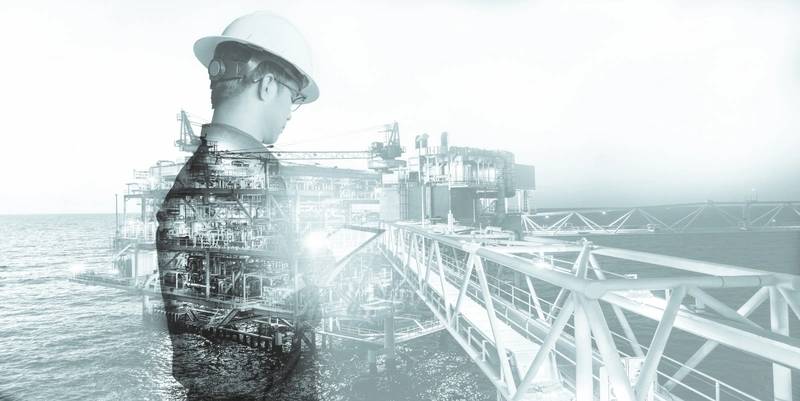
According to Rystad Energy, offshore maintenance budgets were slashed by at least 35% in 2020, thanks to severe spending cuts and Covid-19 restrictions. This could create conditions with a result of equipment failure, asset downtime, and critical health and safety issues, which risks creating hazardous and life-threatening working environments for offshore personnel.
It’s no secret; operators have been forced to reduce manning levels offshore to prevent Covid-19 from spreading even further, which in turn has created a shortage of competent personnel who can tackle essential maintenance work. Furthermore, operators around the world are under increased pressure to maintain uptime and production, in order to provide a secure global energy supply during the pandemic.
All in all, this has created a critical backlog in maintenance tasks for many Operators.
A warning from the regulator
In early 2020, the UK regulator for workplace health and safety, the Health and Safety Executive (HSE) launched “virtual visits” to offshore platforms and vessels in response to the need for social distancing.
The regulator uncovered cases of inspection failures during these remote visits, which led to HSE Director, Chris Flint, voicing concerns that if operators fail to keep on top of maintenance offshore, they will unintentionally create a backlog of work, which he said could have a major impact on operations down the line.
Around the same time, substantial fines were handed out and unplanned shutdowns risked, after the same watchdog cited “risk of serious personal injury or death from fire and explosion” on a North Sea vessel.
By October 2020, the situation had deteriorated further. A UK-based union declared concerns that the difficulty of balancing platform maintenance backlogs, against the risk of Covid-19 outbreaks, was putting North Sea workers in a “dangerous situation”.
Risk in numbers
This issue isn’t a new one. A total of 1,382 non-compliance issues were raised in 2019, up about 10% from 1,254 in 2018, according to the Health and Safety Executive’s (HSE’s) annual Offshore Statistics and Regulatory Activity report.
The challenge is also not exclusive to the UKCS. By October 2020, Norway had recorded 50 serious incidents for the year. Worryingly, this figure is double that from the same time last year and four times higher than in 2018, according to the Petroleum Safety Authority Norway (PSA). As a result, the Norwegian regulator launched a record number of investigations.
The heart of the issue
A short-sighted view could be more harmful in the longer-term. Deferring non-essential maintenance or equipment inspection and upgrades, in a bid to save costs or downtime, will reduce reliability, negatively impact production levels and put a global workforce at increased risk.
A key factor driving this problem is that many oil and gas assets operate with a legacy maintenance strategy and plan. These strategies have not been updated over the asset life, and in-line with changing production, commercial realities and life stage of the asset.
Original Equipment Manufacturer (OEM) recommendations can go unchallenged resulting in unnecessary maintenance burdens which place significant pressure on asset teams and operational budgets. OEM recommendations only need to be followed whilst items are under warranty to ensure cover, after which the frequency and level of maintenance required can be readjusted, but this is not commonly understood.
For example, we know from our experience that as much as 40% of maintenance work carried out by FPSO vessel operators can be challenged as either non-value adding or work that is carried out too frequently. On average operators could be spending 500 manhours across equipment groups (such as electric motors, pumps, instrumentation, etc.) on maintenance activity that fails to reduce the risk of failure or preserve facility uptime. Indeed, over-maintenance is a known factor in the causes of equipment breakdown.
This indicates that by relying on OEM guidelines, operators will be unable to determine whether maintenance activities are essential, and instead of prioritizing them, they are added to the growing backlog.
Change of times
Looking back, when the oil and gas market was buoyant, the industry was habitually very reactive to maintenance issues because it could afford to be. Reacting to maintenance issues is an age-old problem due to the pressures of sustaining uptime and maintaining production. This is effectively throwing money at a problem, a costly strategy, which can impact other equipment and workflows, and require even more non-productive time to resolve. Today, the industry cannot afford this approach.
This situation can be avoided by prioritizing maintenance based on equipment criticality, but in some instances, perhaps surprisingly, failure can be planned for by having essential resources and plans in place, ready to act when the breakdown occurs.
On an asset, not everything needs to be maintained; some equipment can be left to run to failure with minimal impact on other equipment and processes, and no impact on safety.
If we compare this to a domestic environment, it is commonly accepted that we don’t need to change every light bulb in our homes each year; instead, we replace the bulbs that have blown, and this typically doesn’t impact the circuit or other electrical appliances or the safety of your home.
Breaking the cycle
Data is the key to being able to understand and optimize maintenance. By leveraging data, one gains a better understanding of equipment including its history, usage, and variables such as corrosion, vibration, failure, and consequence. Armed with these insights, one can predict, plan for and mitigate failure.
At a time where bringing more people offshore to undertake maintenance work means larger crew numbers, shared accommodation, and inevitably an increased risk of the Covid-19 virus spreading, it is essential to eliminate unnecessary maintenance.
There is a perception that ensuring maintenance strategies fit commercial and safety objectives, whilst complying with the expectations of the regulator, is time-consuming and costly, but that is a myth we have disproven.
A recent maintenance optimization review Vysus Group performed for a major North Sea operator looked at two assets with a combined maintenance burden of around 101,000 hours per annum, representing a high risk for the operator.
As a result of our review, 23,000 maintenance hours per annum were identified as being spent on over frequent or unnecessary tasks, allied with a 6000-hour reduction achieved in both asset’s maintenance backlog. It should be noted that the benefit realized for this operator is not only a one-shot-hit but are recurring year-on-year.
Vital resources and expenditure are being wasted on ‘firefighting’ non-essential maintenance work; the cycle must be broken by adopting a risk-based, data-rich approach. Only then can focus be prioritized on the right areas of maintenance, to reduce the backlog, keeping people safe and operations running efficiently.




No comments
Post a Comment